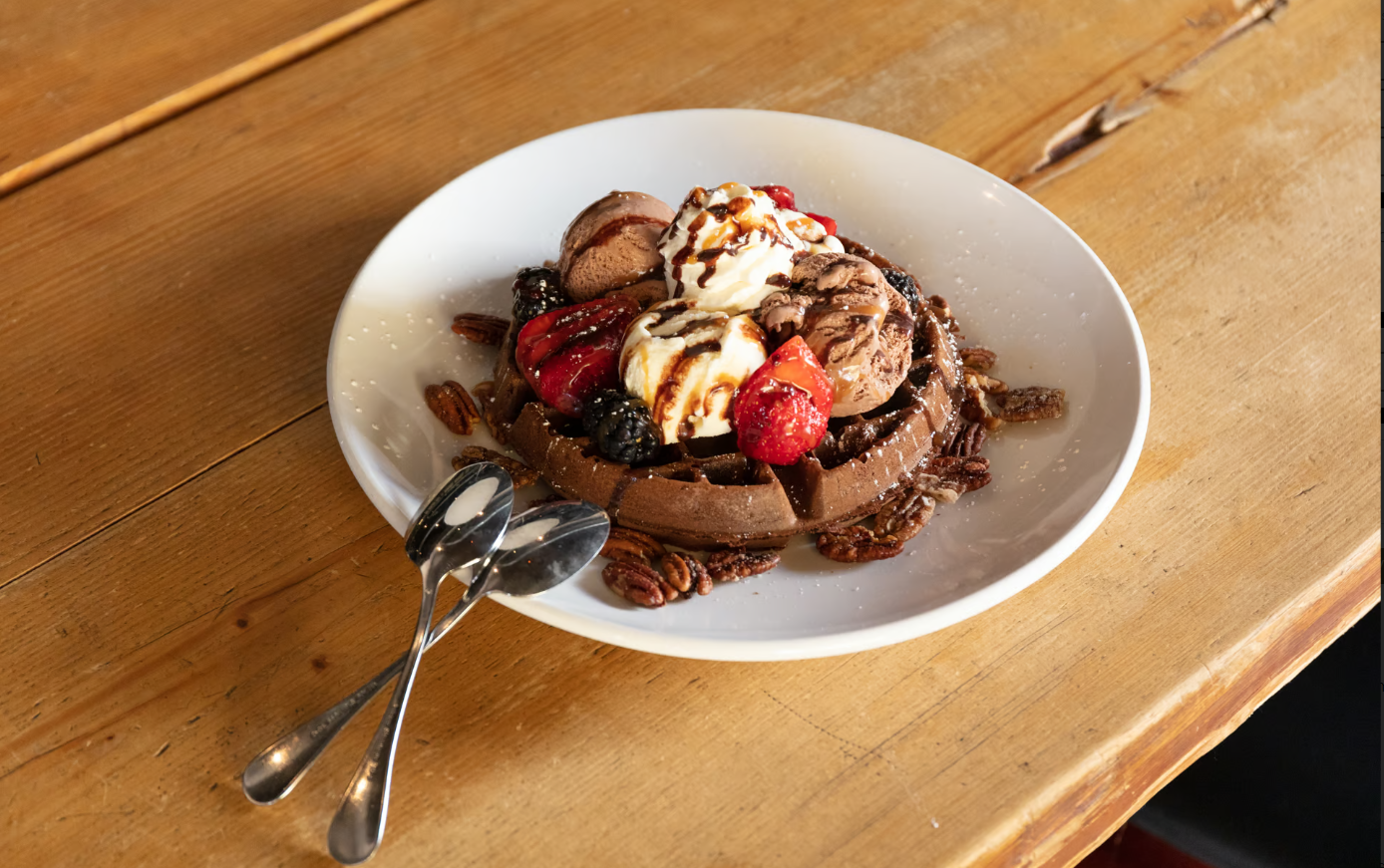
It’s no surprise that Tucson, a city with deep ranching roots, is big on beef. But the brand that’s prized by a wide swath of local chefs may be unfamiliar to many: 1855 Black Angus Beef. Named for the year in which the Swift meat packing company, now a subsidiary of JBS, was founded as well as for a prized breed of cattle, it is distributed to restaurants throughout Arizona exclusively by Merit Foods.
Chef Doug Levy has used 1855 Beef for a variety of items on the rotating menu of Feast, his New American dining room. Levy notes, “A few times a week, people who try it in different dishes say, ‘This is the best steak I’ve tasted in my life.’” He adds, “And some of these customers are not young, so that’s saying a lot.”
Levy attributes the excellence of the 1855 beef to its marbling, the desirable fat laced through a good cut of meat. Carlos Palomarez, General Manager at Little Mexico Steakhouse, also touts the benefits of 1855 Beef’s marbling. He says, “In our ranchero-style rib eye, the fat soaks in a lot of the wood flavor of the mesquite grill and also the flavor of the marinade.”
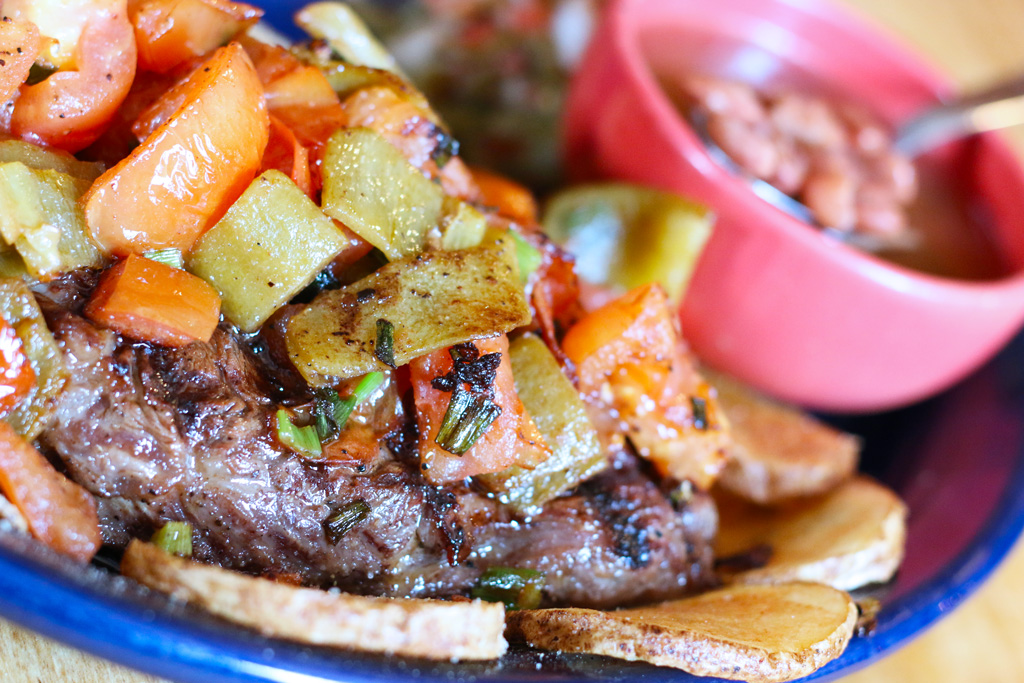
Even in uncooked meat, marbling can be essential. Carla Rodriguez, manager at Tavolino Ristorante says, “When the beef we source for our carpaccio has enough marbling in the lean cut, the meat melts in your mouth. That is the main reason we use 1855 Beef tenderloin, it is consistently very finely marbled.”
Different types of cattle are bred for different purposes. Holsteins, for example, are known for dairy production, while other breeds are designed to pull ploughs. Angus cattle, which originated in Scotland and began to be imported to the U.S. in the early 1800s, are expressly bred to produce high-quality meat. Not only do Angus cattle put on a type of internal muscle fat that makes for good marbling, but they also put it on quickly. This means they are ready to eat when they are younger and the meat is tender.
In addition, because they naturally grow quickly, Angus cattle don’t need to be given growth hormones.
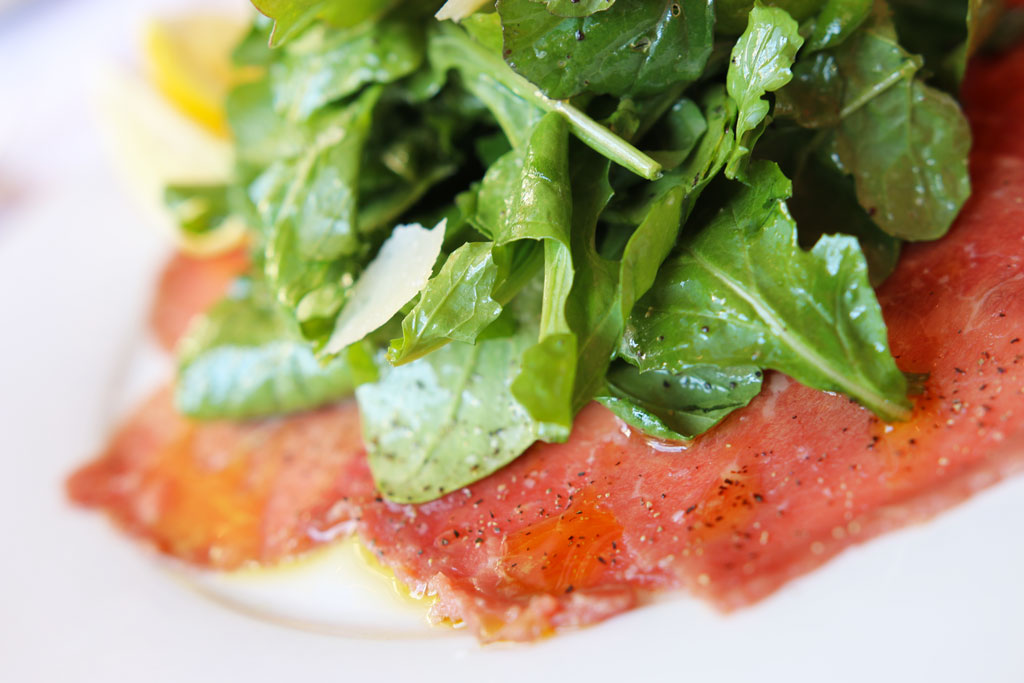
In the 1980s, after the breed became established as a superior meat producer, Certified Angus Beef programs were put in place at a variety of processing plants around the U.S. In addition to authenticating that Angus cattle were the source of the beef being rated, USDA inspectors ranked the meat on its conformity to its usual standards: Select, Choice, and Prime.
JBS promotes its 1855 Beef as a cut above the rest in all categories.
Geography plays a large role in the beef’s bragging rights. Scott Butler, General Manager of Merit Foods and the buyer of 1855 Beef for the company, explains that the cattle designated for the 1855 program are raised around a single plant in Grant Island, Nebraska, where the breed is concentrated. Because Angus cattle are not genetically designed to tolerate heat, the cool climate in Nebraska is especially suitable for them. And because they are pastured just outside the Grant Island plant, the cattle don’t experience the stress of being shipped long distances.
Butler likens the inspections of the beef at Grant Island to inspections at a Mercedes plant, where all the cars are up to a very high standard. “To be rated prime or choice in Grant Island is to be the best of the best,” he says.
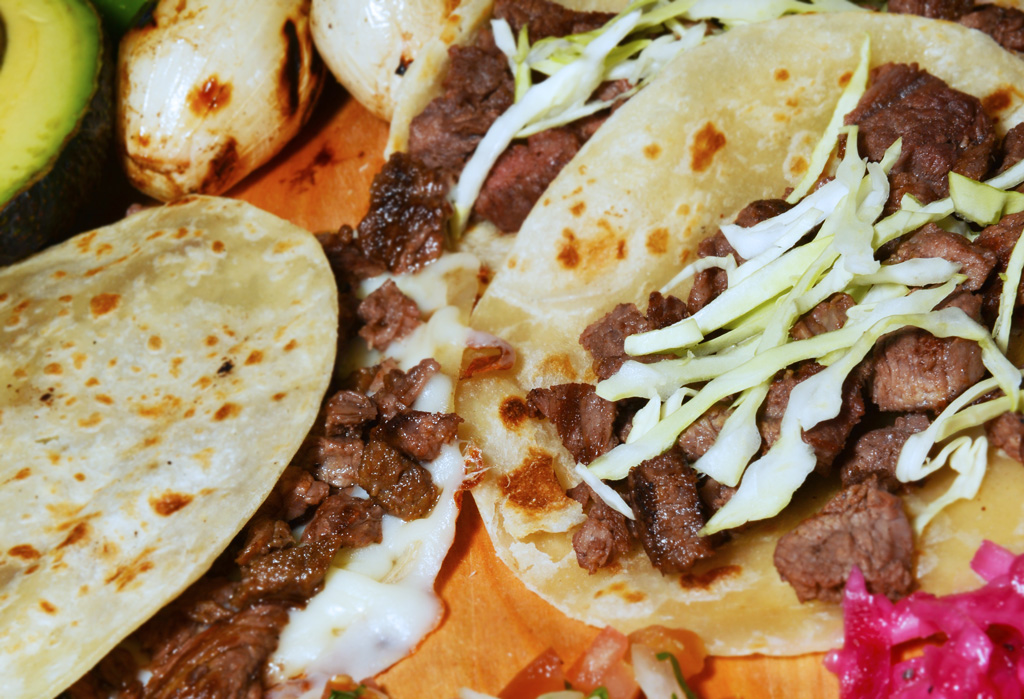
But if the beef offers Mercedes quality, it doesn’t necessarily cost Mercedes prices.
“It depends on the cut,” Butler explains, “In tenderloin, say, there’s a big difference between 1855 and other high-end beef, maybe 50, 60 or 75c per pound. But in other cuts like brisket or chuck, the difference between buying a select or choice product and buying 1855 Beef may be only one or two cents.”
For Jocelyn Gonvar, General Manager of Don Pedro’s Peruvian Bistro, it’s well worth paying a bit extra for tenderloin to use in the restaurant’s lomo saltado, beef sauteed with onions and tomatoes, which she calls “the national dish of Peru.” She says, “1855 beef is the closest we can find here to Peruvian beef. It remains tender and easy to cut when we sautee it on a high flame.”
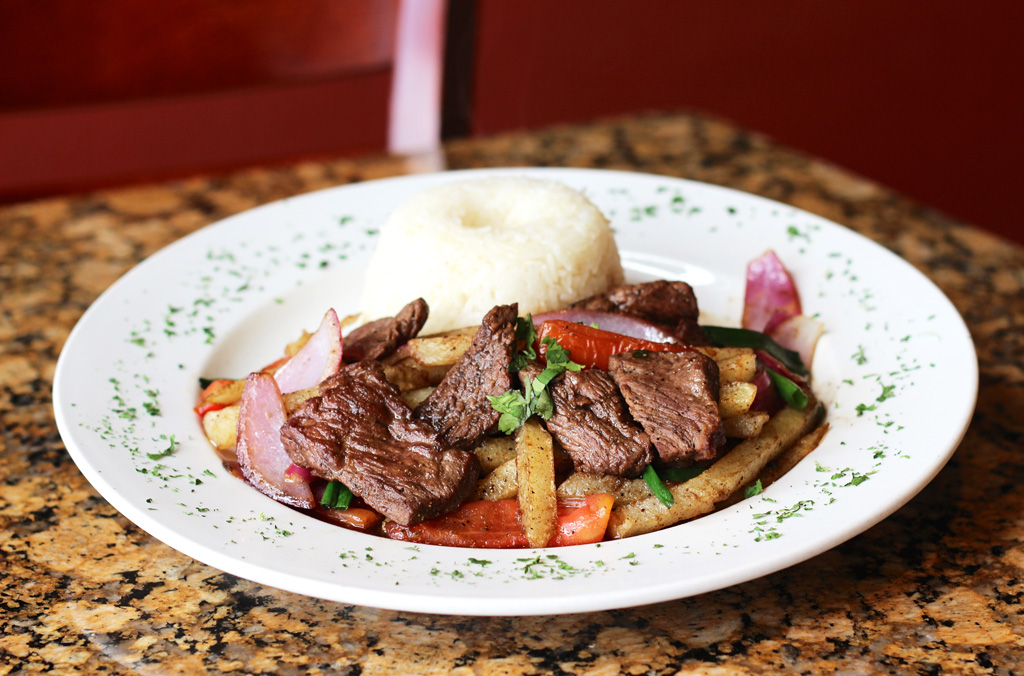
More casual dishes benefit from the quality of 1855 Beef too. At Barrio Brewing Company, the beef for the burgers is ground in house from primal cuts and seasoned during the grinding. Several different grades go into the mix. John Zona Harrison, the head chef, says, “The 1855 Beef is not only tasty, but the fat holds the burger together very well, both while we are grinding it and when we are grilling it.”
And BK, known for its Food War-winning Sonoran hot dogs, prizes the taste and tenderness of the 1855 Beef that it uses for the carne asada featured in its tacos and caramelos.
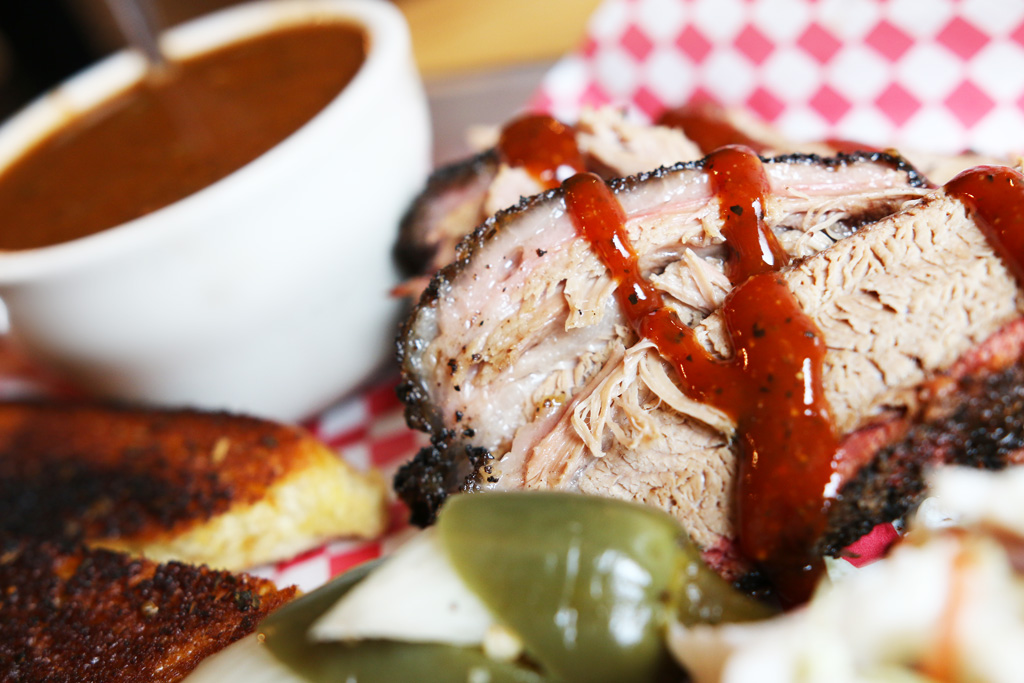
Less obvious features than taste and tenderness that restaurateurs look for in beef are the trim specs – the way the meat is cut before it is delivered – and consistency. Gary Sneva, owner of Gary Ray’s Texas BBQ, says that size counts when you smoke your own briskets: the bigger they are, the better. Of the 1855 Beef briskets the restaurant get from Merit Foods, Sneva says, “We never get any bad ones. The size is always consistent, between 12 or 15 pounds.” (See Smokin’ Showdown sidebar for details on Tucson’s first brisket cookoff.)
Doug Levy of Feast concurs. “I would get the 1855 Beef for the trim specs alone, and for the consistency. I’ve never gotten a stringy piece or an overly lean one. This is beef with extremely broad appeal.”
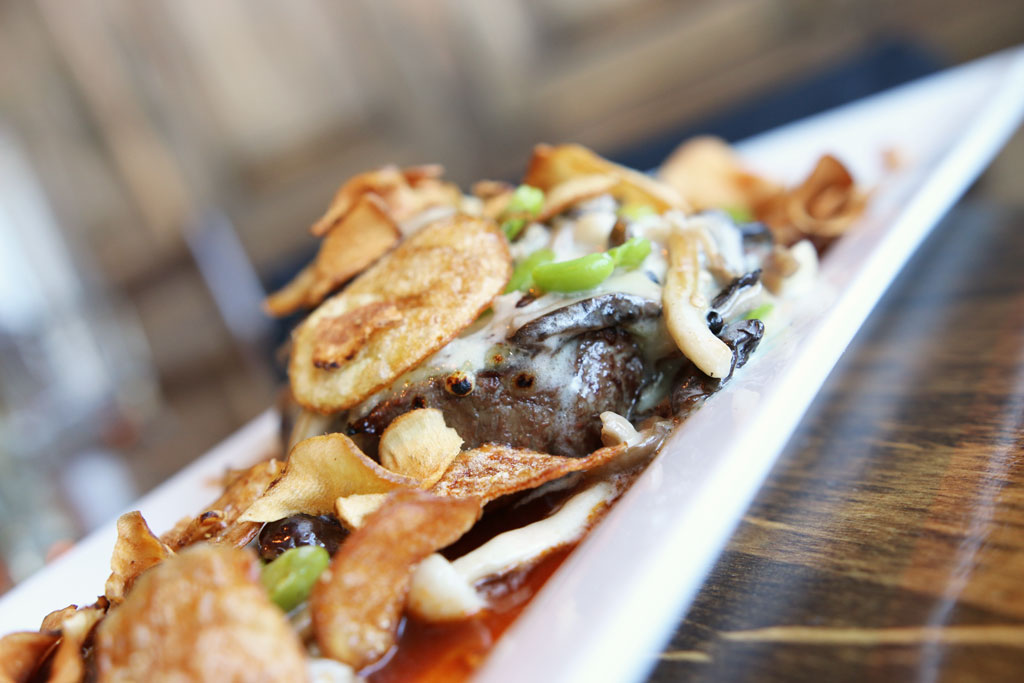
Edie Jarolim has worn many hats, including a sombrero on a one-too-many-margaritas night. She earned a Ph.D. in American literature from New York University and was a guidebook editor at Fodor’s (Random House) and Frommer’s (Simon & Schuster) in New...